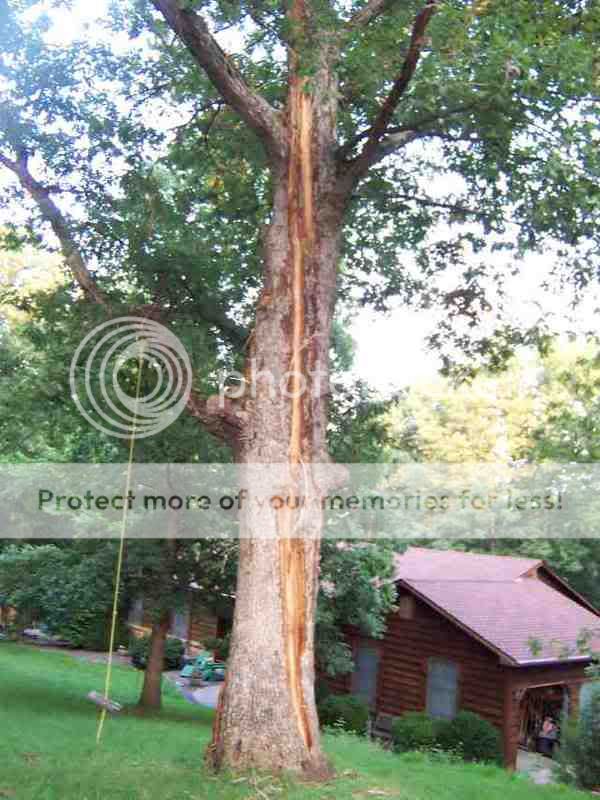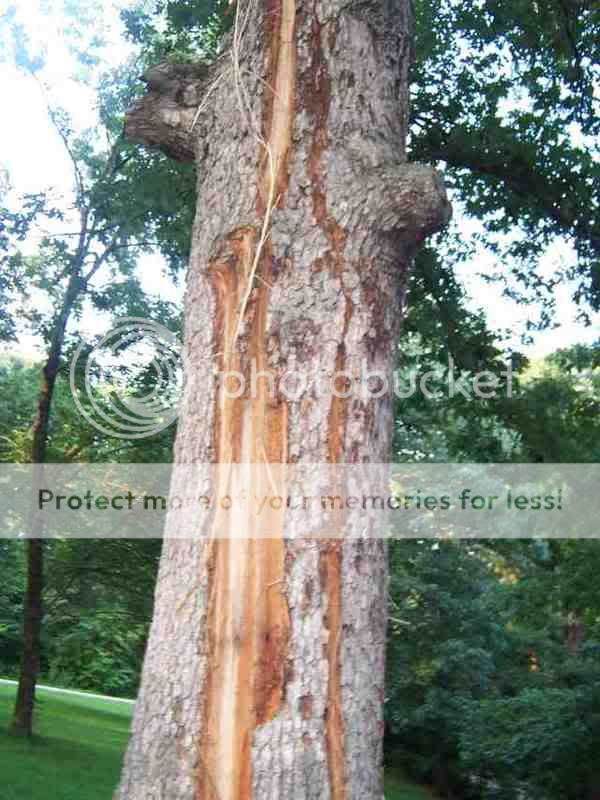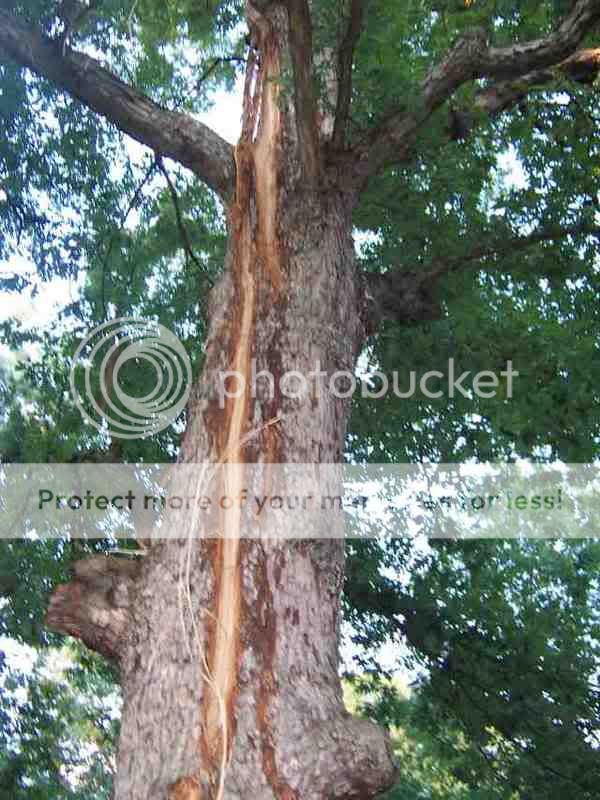Roceye
New Member
first off- what a great site you guys have...wish I would have found it sooner.
I just stumbled into it while doing research on upgrading to a larger saw.
Ride the lightning....
A few months ago lightning hit the largest oak on my property. It didn't split, but lost alot of bark. This tree is relatively close to my house so it will have to come down if it isn't going to survive.
What do you think the prognosis is?
A few pics:



thanks for looking
Dave
I just stumbled into it while doing research on upgrading to a larger saw.
Ride the lightning....
A few months ago lightning hit the largest oak on my property. It didn't split, but lost alot of bark. This tree is relatively close to my house so it will have to come down if it isn't going to survive.
What do you think the prognosis is?
A few pics:



thanks for looking
Dave




